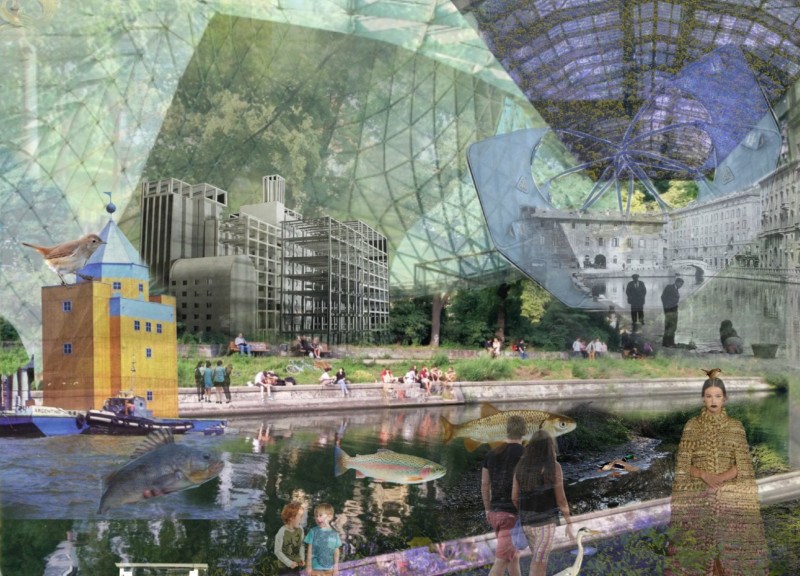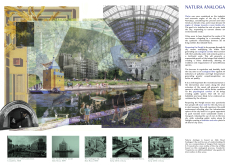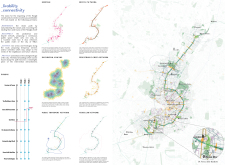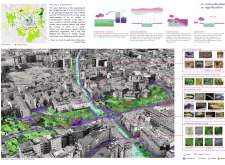5 key facts about this project
**Unique Design Approaches**
One distinguishing aspect of Natura Analoga is its integration of natural elements with urban infrastructure. The design reintroduces the historical importance of water in Milan's landscape, transforming the Naviglio Canal into a vibrant ecological corridor. The architecture incorporates features such as natural water filtration systems, which mimic ecological processes to improve water quality. Additionally, the project employs native plant species throughout the landscape, promoting local biodiversity and adapting to the ecological context of the area.
The pathways designed for pedestrian and bicycle access are crafted from permeable materials, allowing rainwater absorption and reducing surface runoff. This sustainable approach links various urban zones, enhancing connectivity while minimizing environmental impact. Civic spaces included in the design aim to foster community engagement through multifunctional areas that can accommodate markets, events, and recreational activities.
**Architectural Strategies and Materiality**
The architectural strategy emphasizes sustainability through the use of eco-friendly materials. The project likely features reclaimed wood, corten steel, and glass, all aimed at reducing energy consumption and maximizing natural light. Elements such as green roofs and biodiverse vegetation contribute to energy efficiency while providing spaces for wildlife. The layout is informed by the historical context of the Naviglio Canal, ensuring that modern interventions respect and enhance the local cultural identity.
These strategies prioritize not only environmental sustainability but also social cohesion. The design encourages interaction with the waterway and its surroundings, promoting relaxation and recreational opportunities. The multifunctional spaces reflect a contemporary understanding of urban needs by integrating ecological health with community living.
Natura Analoga represents a commitment to sustainable urbanism, focusing on enhancing local ecosystems while inviting residents to engage with their environment. The project underscores the importance of design that values both ecological and social dynamics in urban settings.
Explore the project presentation further to gain insights into its architectural plans, sections, and innovative design ideas that highlight the unique approaches taken in this initiative.


























